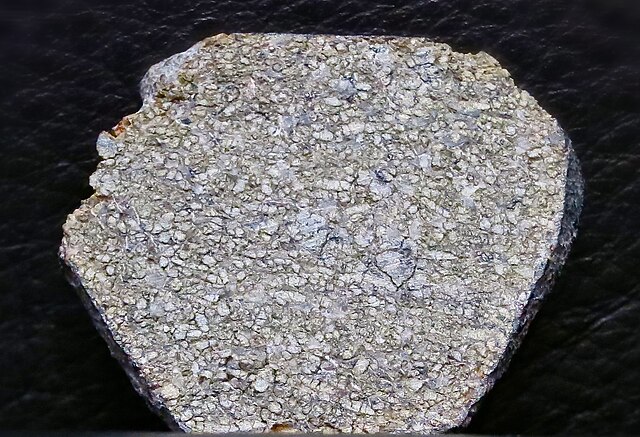Northwest Africa 7034 is a Martian meteorite believed to be the second oldest yet discovered. It is estimated to be two billion years old and contains the most water of any Martian meteorite found on Earth. Although it is from Mars it does not fit into any of the three SNC meteorite categories, and forms a new Martian meteorite group named "Martian ". Nicknamed "Black Beauty", it was purchased in Morocco and a slice of it was donated to the University of New Mexico by its American owner.
The image of the original NWA 7034 was photographed in 2012 by Carl Agee, University of New Mexico.
Northwest Africa 7034, nicknamed "Black Beauty"
A Martian meteorite is a rock that formed on Mars, was ejected from the planet by an impact event, and traversed interplanetary space before landing on Earth as a meteorite. As of September 2020, 277 meteorites had been classified as Martian, less than half a percent of the 72,000 meteorites that have been classified. The largest complete, uncut Martian meteorite, Taoudenni 002, was recovered in Mali in early 2021. It weighs 14.5 kilograms and is on display at the Maine Mineral and Gem Museum.
Martian meteorite EETA79001, shergottite
Martian meteorite NWA 7034, nicknamed "Black Beauty," weighs approximately 320 g (11 oz).
NWA 6963, a shergottite found in Morocco, September 2011.
Nakhla meteorite's two sides and its inner surfaces after breaking it




